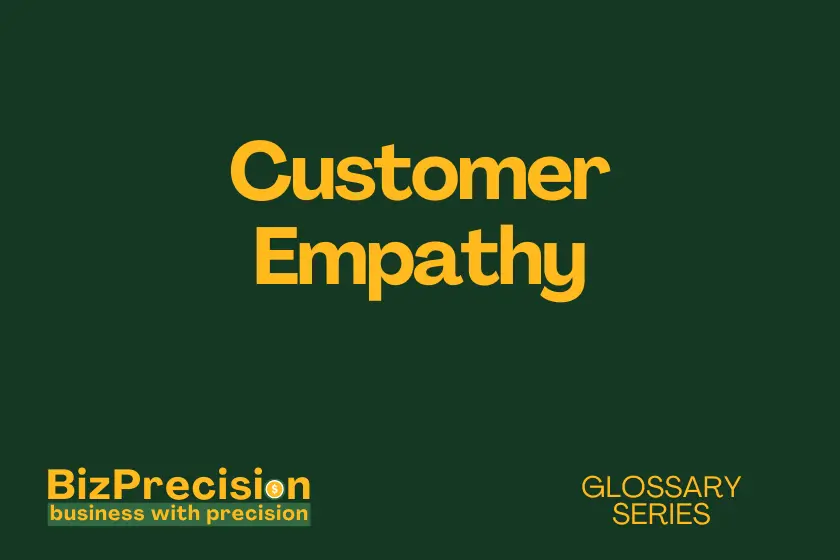What is Customer Empathy?
Customer empathy is the ability to understand and share customer feelings and experiences to create better business solutions.
Understanding customer emotions helps businesses build stronger relationships and deliver better products. According to a 2023 Salesforce State of the Connected Customer report, 88% of customers say the experience a company provides matters as much as its products or services.
Customer empathy turns basic customer service into meaningful connections. Let’s explore how it works and why it matters for your business success.
Key Components of Customer Empathy
Understanding Emotional Intelligence in Business
Emotional intelligence shapes every customer interaction you have. When your team reads customer emotions well, they make better choices. A recent study by Harvard Business Review found that companies with high emotional intelligence scores see 63% lower customer churn.
Training teams to spot emotional cues takes time but brings big rewards. Start by teaching active listening skills. Have your team focus on tone of voice and word choice. Ask them to repeat customer concerns in their own words.
Building emotional awareness helps solve problems faster. When teams understand customer feelings, they make fewer mistakes. They also find better solutions to common issues.
The Psychology Behind Customer Behavior
Customer choices often stem from emotions rather than logic. Research from the University of Florida shows that 95% of purchasing decisions happen in the subconscious mind.
Trust plays a key role in buying decisions. Customers choose brands they feel understand them. Show them you care by:
- Asking thoughtful questions about their needs Each query should dig deeper into their true goals. Focus on understanding their challenges fully.
- Offering solutions that match their concerns Your recommendations must clearly address their stated problems. Explain how each solution helps them specifically.
- Following up to ensure satisfaction Regular check-ins show ongoing care for their success. Set clear times to review progress together.
Measuring Customer Sentiment
Track how customers feel about your brand through multiple tools. Use surveys, social media monitoring, and feedback forms. Look for patterns in both positive and negative responses.
Key metrics to watch include:
- Net Promoter Score (NPS) This number shows how likely customers are to recommend you. High scores mean strong emotional connections exist.
- Customer Effort Score (CES) Track how easy it is for customers to work with you. Lower effort leads to higher satisfaction rates.
- Customer Satisfaction Score (CSAT) Measure specific interaction quality through quick surveys. Use results to improve weak points in your service.
Modern tools help gather this data automatically. Set up systems to collect feedback at key touchpoints. Review results monthly to spot trends early.
Implementing Customer Empathy in Business
Creating Empathy Maps
Empathy maps help teams understand customer viewpoints better. Start with basic customer data. Add insights from surveys and interviews. Build complete pictures of your ideal customers.
Follow these steps to create useful maps:
- Gather direct customer feedback Interview current customers about their experiences. Record their exact words and feelings.
- Note common pain points List problems that appear in multiple conversations. Look for patterns in customer struggles.
- Track customer goals Write down what success looks like for your customers. Match your solutions to these targets.
Training Teams for Empathetic Service
Build empathy skills through regular practice. Role-playing helps teams understand customer positions. Create scenarios based on real customer interactions.
Good training programs include:
- Weekly practice sessions Set aside time for teams to work on empathy skills. Use real examples to make training relevant.
- Feedback from experienced staff Let veteran team members share their knowledge. Learn from past successes and mistakes.
- Clear communication guidelines Create standards for customer interactions. Focus on being helpful and understanding.
Design Thinking and Customer Experience
Use customer feelings to guide product development. Think about emotional impact at each step. Test ideas with real users early and often.
Consider these factors:
- Ease of use Make products simple to understand. Remove unnecessary complexity from designs.
- Emotional response Watch how customers react to your products. Look for signs of frustration or joy.
- Problem-solving power Ensure solutions truly fix customer issues. Test products in real situations.
Benefits and Business Impact
Improving Customer Loyalty
Empathy builds stronger customer bonds. A study by Gallup shows that companies with high emotional engagement see 23% more revenue growth.
Focus on these areas:
- Personal connections Train teams to remember customer details. Use this information to provide better service.
- Consistent support Maintain quality across all contact points. Keep service levels high no matter who helps.
- Problem prevention Spot potential issues before they grow. Take action to protect customer interests.
Driving Innovation Through Understanding
Listen to customer needs to find new opportunities. Watch for unmet needs in your market. Create solutions that solve real problems.
Success comes from:
- Regular customer feedback Keep communication channels open. Act on suggestions quickly.
- Market research Study trends in customer behavior. Look for gaps in current offerings.
- Quick response times Move fast when opportunities appear. Test new ideas with customer input.
ROI of Customer Empathy
Track the business value of empathy programs. Monitor key performance indicators. Measure both short and long-term results.
Important metrics include:
- Customer lifetime value Calculate how much customers spend over time. Compare before and after empathy training.
- Retention rates Track how long customers stay with your brand. Note changes as empathy improves.
- Referral numbers Count new customers from existing client recommendations. Good service drives more referrals.
Conclusion
Customer empathy drives business growth through better relationships. Start building your empathy program today. Focus on understanding customer needs deeply.
Take these next steps:
- Assess your current customer understanding
- Train your team in empathy skills
- Create systems to track progress
Remember, strong customer connections lead to lasting success. Make empathy a core part of your business strategy.







